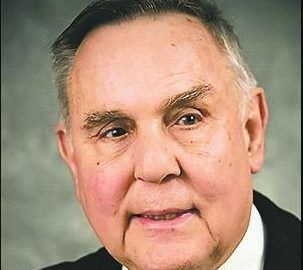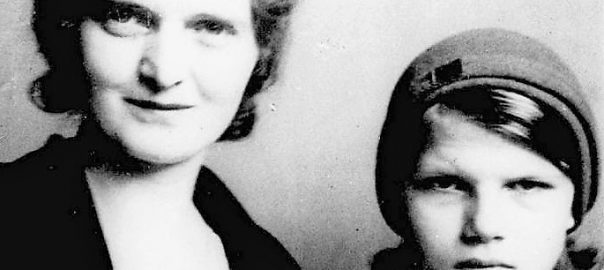I wrote this memorial for Dr. Otis Stephens in 2017 after learning of his December 2016 death. I first published it as a Facebook note. I am now moving it, in slightly modified form, to American Pathos.
Last night—the night before I sent my son off to college—I learned of the death, last December, of one of the greatest men I ever knew.
Dr. Otis Stephens was a professor of political science and law at the University of Tennessee. When I arrived on the U.T. campus in the mid-1980s, he was already a legend there. Here was a man born totally blind who had both bachelor’s and master’s degrees in political science and a Ph. D from Johns Hopkins. Just a few years before I met him, when he was already in his late 40s, he received a law degree from U.T. while he was working there. Only later did I learn that he was an accomplished pianist, and only yesterday did I learn that he paid his way through the University of Georgia tuning pianos and playing in a band called “The Bulldogs” and that he held a distinguished chair at Harvard. Once, in graduate school, I used a massive, blue constitutional law textbook; he wrote it. I was pleased but not surprised.
Dr. Stephens was the first person I ever knew, and the only one I ever knew well, who had a guide dog. Since childhood, I had had a reverent interest in these dogs. It began in the 1970s when I read James B. Garfield’s remarkable children’s novel, Follow my Leader, about an 11-year-old boy who is blinded in an accident and learns to live again with the help of a guide dog. My brothers read the book too. It was something we shared, and I used to think about it every time Dr. Stephens, led by Amery (I hope I have the name right after three decades), his German Shepherd, walked into a classroom.
At any time of day, one might see Dr. Stephens and Amery walking confidently across campus. If you spoke to him while he was moving, he would cut you off and tell you that he was counting steps, so that was a mistake you made only once. The next time he saw you (he joked often about students’ awkward efforts to avoid saying saw or see in reference to him and assured them that he used the words in the same way sighted people did) he would apologize for the necessity and ask how you were doing or how he could help you.
When I first met Dr. Stephens, Amery was a new dog. His previous dog had died—I can only imagine his sorrow in this—and he told some other students and me that he had been given a choice of returning to weeks of training with a new dog or taking a “re-trained” dog that had somehow not lived up to the expectations of the school. He chose the latter. One day, he walked into the classroom carrying a bundle of papers, and before any of the students could stop him, Amery led him headlong into the edge of a set of world maps. Dr. Stephens ran into the maps and hit his face on them. He turned red, made the dog sit, and struck the maps twice with his hand, shouting, “Right here, Amery! Right here!” He then smiled at us and joked about the whole thing, saying that this was part of the process for correcting the dog’s errors. Amery, as usual, curled up under a table, but his ears drooped a little more than they normally did.
Dr. Stephens’s classes were always fascinating and fun; I doubt if I ever missed one. He was open about the special procedures necessary for a blind man to run a classroom. He smilingly told us to “blurt,” since raising our hands was a waste of time (though not blind, I encourage this method to this day and usually invoke Dr. Stephens’s teaching to explain it to my students). To help him better interact with the students, he asked you to pick a seat and make it your own. Early in the semester, you were to speak up and identify yourself. Within a few class sessions I could simply interject, “Dr. Stephens,” and he would answer, “Yes, Mr. Brewer,” and look in my direction. I can’t exactly explain why, but this had a way of making one feel important. He cast a spell on his students. Once, when discussing a Fourth Amendment legal case that had begun with a drunk driving stop, he interjected, “This guy had about as much business driving a car as I have.” For the rest of the semester, we knew we could laugh at anything.
As he was the first educated blind person I ever met, Dr. Stephens was the first person I ever knew who used Braille. I knew much about Braille from my childhood with Garfield’s novel. His books were thick and heavy looking, made of what looked like manila folder stock. It was shocking to see a man stare into nothing and read aloud, with dashing speed, complicated legal cases and judicial decisions, his fingers flying across the page, making a slight scraping sound with each stroke. That there were 20 or so fascinated people watching him do this seemed not to trouble him at all. Only once did I ever see him angry at anyone, and we never knew who it was. He said word had reached him that someone in one of his classes was answering the attendance roll for another student and that he was going have to take more careful records. At this, he took out a Braille writing slate and a pointed stylus. We were accustomed to seeing him read in Braille, but there was an audible gasp when he began to write in Braille, punching bumps into a piece of card stock with the speed of a typist as he stared blankly into the crowd. He would call a name and then write. We never knew what he was writing or how it helped him with his problem, but I will wager that no one present that day ever thought of taking advantage of or trying to outsmart the man.
I have not spoken with Dr. Stephens in about a dozen years. After I was named a James Madison fellow, in 2003, and began writing my paper on A.L.A. Schechter Poultry Corp. v. United States, I contacted him to tell him about my fellowship and to ask his help in tracking down the Schechter Brothers’ district court trial transcript. He put me in touch with some sources but mostly congratulated me on my accomplishment. I was honored when he said he remembered me well as a “fixture” in his classes in the 80s.
As I have grown older, teaching history and government to small town kids, some of them impoverished and troubled, I have thought about Dr. Stephens as a teacher. His patience, his kindness, his humility, and his humor all deeply impressed me and have influenced how I relate to my own students. He seemed keenly aware of the atmosphere of wonder, admiration, and nervousness his blindness provoked in some of the young people he taught and did all he could to dispel it. This, with his intellect, made him masterful. You knew you were in the presence of greatness. Deep down, he probably knew it too, but he never acted that way. He never said it, but I think he would agree: know your stuff, and don’t take yourself too seriously; your students will love you for both.
K. T. B.

